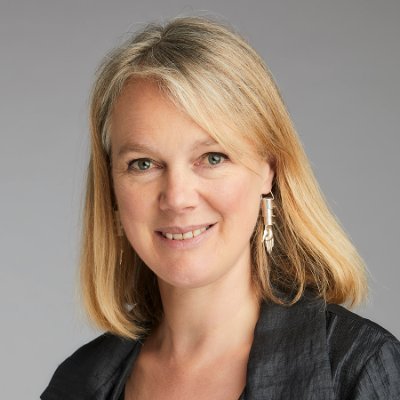They’re soloists at heart, but love the teamwork and sense of corporate purpose. And the gossip. Some musicians find just as big a thrill playing in a vast symphony as they do out at the front starring in a concerto. All hail those world-class musicians who contributed their gifts to orchestras – some for a few years, others for a life-time. Here, we present six of the very finest…
James Galway, flute (born 1939)
The son of a Belfast dockworker turned ‘Man with the Golden Flute’ loves to tell the story of how he turned down the Berlin Philharmonic. He was late for the audition, but so staggered them with his virtuosity they were compelled to offer him the job of principal flute.
Feeling they hadn’t minded their manners, he turned them down and returned to London, where he had a busy career playing at Covent Garden and the London Symphony, Royal Philharmonic and BBC orchestras.
After a begging letter he agreed to ‘try it for a month’ and stayed six years during Herbert von Karajan’s tenure: ‘It was the most amazing experience of my life. I couldn’t believe an orchestra could play like that.’ He shocked many when he quit, aged just 35, to pursue a solo career.
Josef Gingold, violin (1909-1995)
Gingold, born in Belarus, could very well have been a soloist but chose instead the life of the concert master. He studied in Belgium with Eugene Ysaÿe, and gave the first performance of the composer’s Solo Sonata No. 3.
In 1937 he was picked for the NBC Symphony Orchestra and played under Toscanini, going on to be concertmaster and soloist in the Detroit SO and then at Cleveland Orchestra under Georg Szell.
He taught a generation of concert masters including William Preucil, Joseph Silverstein, Jaime Laredo, and the young Joshua Bell, who said of him: ‘Gingold was one of the most sincere and beautiful music makers that I’ve ever heard… He loved the violin so much it never left his hand from morning till night.’
Adolf Herseth, trumpet (1921-2013)
The fabled power and lustre of the Chicago Symphony Orchestra’s brass section owed much to the legendary Adolf ‘Bud’ Herseth.
Principal trumpet for more than half a century, Herseth entered the orchestra in 1947, played under no fewer than six music directors – Arthur Rodzinski, Fritz Reiner, Rafael Kubelik, Jean Martinon, Georg Solti and Daniel Barenboim – all of whom stood in awe of his technical prowess, impeccable musicianship, and a cast-iron embouchure that was still serving him in his 80th year (2001).
Although Herseth logged well over 50 solo appearances, he always thought of himself as an orchestral player: ‘I turned down some very tempting offers to stay in Chicago. To me, the biggest thrill of all [is] to be in a band like this, with colleagues like these.’
Sabine Meyer, clarinet (born 1959)
This much-celebrated soloist came to the world’s attention when the Berlin Philharmonic players voted to kick her out of the orchestra. A prodigy, she already had a position in the Bavarian Radio Symphony Orchestra when she joined the Berlin Philharmonic in 1982, only the second female to do so.
Herbert von Karajan insisted that Meyer be engaged after her probationary period, but the players voted 73 to 4 that she should leave, saying it was because her sound didn’t blend in with the section.
But Karajan and other observers strongly suspected the reason was her gender, and fought for her to stay. She did so for nine months, leaving in 1983 to pursue a successful career as a soloist and chamber player, and made numerous recordings for EMI.
Janos Starker, cello (1924-2013)
A cellist of consummate mastery, Starker’s searing focus and cool, interpretative brilliance can be heard on more than 150 recordings, including those with the Chicago Symphony Orchestra. Born in Budapest, he was was principal cellist of the Budapest Opera and Budapest Philharmonic shortly after graduating from the Liszt Academy.
As a Jew, he was never granted citizenship in Hungary, and left in 1946 to become principal cellist of the Dallas Symphony Orchestra under Antal Dorati, before moving to the Metropolitan Opera, where he encountered Fritz Reiner, who took him to the Chicago Symphony Orchestra in 1952.
By this time, he was already internationally celebrated for his monumental recordings of Kodály’s Solo Sonata. In 1958 he moved to Bloomington, Indiana where he devoted himself to teaching the next generation of principal cellists for the rest of his life.
Barry Tuckwell, French horn (1931-2020)
The tough, charismatic Australian remains the world’s most recorded horn player. Aged just 19, he arrived in London and worked his way up through regional orchestras until the LSO poached him as principal horn from the Bournemouth Symphony Orchestra.
He remained there for 13 years, making as big an impact as chairman of the board as he did on music-making, repositioning the LSO as the capital’s top ensemble with manager Ernest Fleischman, effectively ousting him when it was felt he exceeded his powers.
His plangent artistry can be heard on many recordings, particularly the Decca set of Britten’s works, including the Serenade for tenor, horn and strings. His famous advice to André Previn if he got lost in a complicated piece was ‘Look vague and elegant and we’ll fix it’. He left in 1968 to pursue a solo career, and then turned to conducting.
